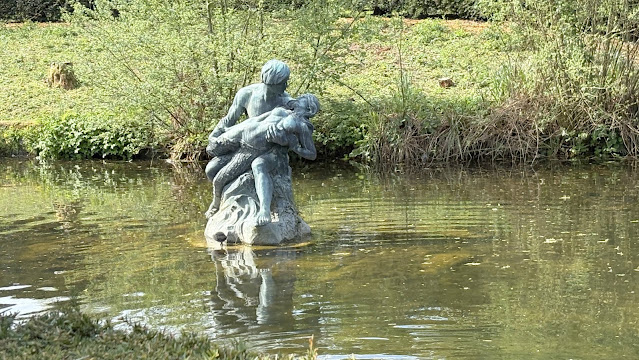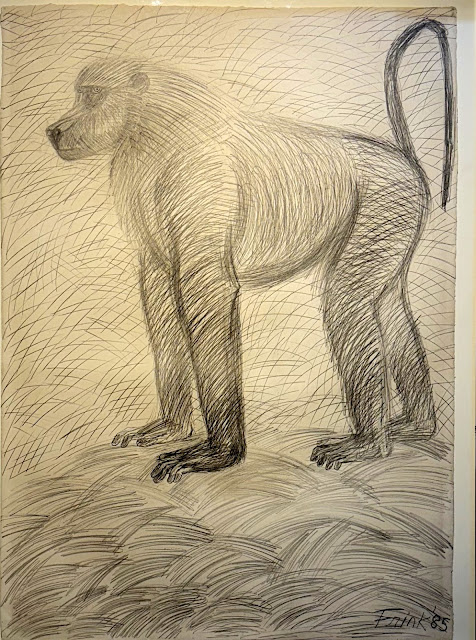Elisabeth Frink at Messum's, London.
An exhibition of some works by Elisabeth Frink to mark the 30th anniversary of her death in 1993, aged 62. Frink was a sculptor and printmaker. Her sculptures were built up from layers of broken and distressed plaster placed on top of a wire armature, which would then be cast in bronze. The subject matter of her work was men, horses and animals.
Horse and Rider, 1985, (bronze)
Goggle Head, 1967, (bronze)
The Goggle Head sculptures were made between 1967 and 1969. Rather than portraits, these are anonymous symbols of brutality and agents of death. The goggles offer the avoidance of eye contact and a sinister edge - the eyes, concealed, is a sign of malevolence. At the time of the Algerian war, Frink saw a photograph of a man called Oufkir who was held responsible for the death of the Algerian freedom fighter Ben Barka. The blank, thuggish face, given a sinister edge by impenetrable black spectacles, haunted Frink and her first Goggle Head appeared. She stated that 'The Goggle Heads are likenesses of stupid people, portraits of stupidity, cruelty and inhumanity. Brainless, nasty people. I think my first fully conscious comments on the world's inhumanity were the Goggle Heads'.

Heads, (bronze)
These three sculptures are part of the Tribute and In Memoriam heads and they represent the polar opposite of the Goggle Heads. They are the victims of acts of brutality or the martyrs to a cause; people who are prepared to risk their life for what they believe. Conversely, they can be seen to represent victims and martyrs. Whilst representing suffering, she also hoped they demonstrated the capacity for human survival.
Small Warrior, 1956, (bronze)
This sculpture is part of a series Frink made which are inspired by her memories of WWII aviators returning from battle in damaged and broken aeroplanes to aerodromes near her childhood home.
Baboon, 1985, (pencil on paper)
We left the gallery and later, as we were walking along New Bond Street, we came across
Horse and Rider, 1974, (bronze)
which I had seen many times before, but it seemed appropriate to include the sculpture in this post.
The work was commissioned for this site and was installed in 1975, mounted on a granite plinth. It is part of an edition of three; another cast is in Whichester, which I have also seen, and which you can see here
A man, riding on a horse, naked and barefoot, without tack - no saddle, bridle or other riding equipment. The man's right hand rests on the horse's stylised mane, with his left hand resting on the horse's left flank. The horse is standing still on four legs, ready to walk. The figures of man and horse are slightly stylised, with lightly defined musculature; the horse has a short mane and tail. Both have their heads turned to their left, as if looking at something.
The sculpture has been described by Frink as 'an ageless symbol of man and horse'.























































